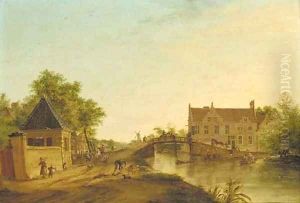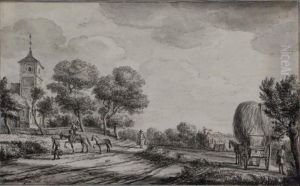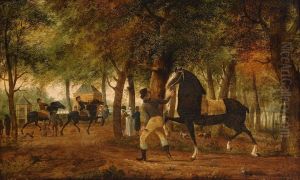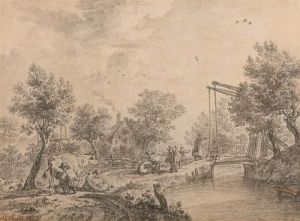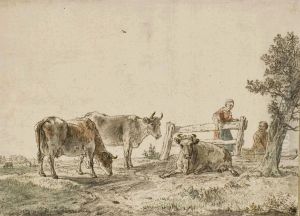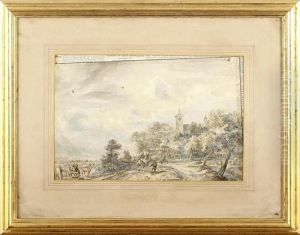Karel La Fargue Paintings
Karel La Fargue was a Dutch artist, known for his work as a painter, printmaker, and draftsman. Born in The Hague in 1745, he was part of a family of artists; his father, Paulus Constantijn La Fargue, and his siblings, including Johannes, Margaretha, and Maria, were all engaged in the arts.
Karel La Fargue's work often depicted cityscapes and landscapes, capturing the Dutch scenery with a keen eye for detail and a delicate touch. His style can be associated with the Dutch tradition of 'topographical' artists, who meticulously rendered urban and rural views. At times, his work also ventured into the realm of genre painting, illustrating scenes of everyday life with the same precision and attentiveness.
During his lifetime, La Fargue's work was well-received, and he created numerous drawings and prints that served as records of the Dutch environment and society in the 18th century. He was particularly adept at using various techniques such as etching and mezzotint, which allowed him to produce works with subtle gradations of light and shade. Despite this, he did not achieve the same level of fame as some of his contemporaries, and his work remained somewhat underappreciated until later historical reassessments.
Karel La Fargue passed away in his hometown of The Hague in 1809. Today, his work is considered significant for its contribution to the visual documentation of his era. His art provides historians and art enthusiasts with a valuable glimpse into the Dutch Golden Age's aftermath, showcasing the landscapes and urban views that characterized the Netherlands in the late 18th century.
